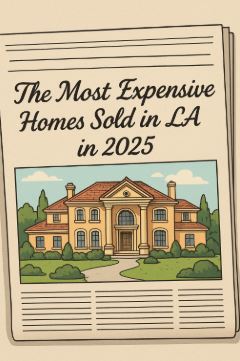Introduction: How the Coastline Shapes Malibu’s Housing Market.
Malibu has long been one of the world’s most desirable places to live, with its dramatic cliffs, sandy beaches, and reputation as a playground for celebrities and high net worth buyers. But unlike other luxury enclaves, cis shaped by more than just supply, demand, and prestige. The city’s location along the California coast makes it subject to some of the strictest land use rules in the country, governed largely by the California Coastal Commission.
These regulations were designed to balance private ownership with public access, protect fragile ecosystems, and ensure that the Pacific coastline remains preserved for generations. For homeowners, developers, and buyers, however, the rules have real consequences impacting everything from property values to construction timelines.
Understanding Malibu’s coastal regulations is key for anyone considering buying, building, or investing in this ultra exclusive market.
What Are Coastal Regulations?
In California, all coastal development is overseen by the California Coastal Act of 1976. The law established the CCC (California Coastal Commission) to regulate construction and land use within the designated Coastal Zone, which includes Malibu’s entire shoreline.
In practice, this means that any project whether building a new mansion, renovating an existing home, or adding amenities like decks or seawalls requires coastal development permits. The Commission reviews applications with an eye toward:
- Protecting public access to beaches
- Preserving coastal views and scenic resources
- Maintaining environmental integrity, including habitats and marine life
- Preventing overdevelopment that could destabilize cliffs or erode beaches
Building Restrictions: Height, Setbacks, and Views.
One of the most visible impacts of coastal regulations is how they restrict the physical form of Malibu homes. Unlike other luxury markets where developers can build ever larger estates, Malibu’s oceanfront is tightly controlled.
- Height Limits : To preserve ocean views, buildings are typically capped at 18 to 28 feet, depending on location and zoning. This makes multi-story mega-mansions harder to construct along the beach.
- Setback Requirements : Homes must be set back a certain distance from the mean high tide line or bluff edge to prevent erosion risks. This reduces usable lot size, especially on narrow beachfront parcels.
- View Corridors : Regulations often require homes to maintain public view corridors, meaning designs must consider sightlines from roads and pathways toward the ocean.
These rules ensure Malibu retains its natural beauty, but they also limit how buyers and architects can maximize property potential.
Environmental Protections: Preserving Beaches and Habitats.
Malibu’s coastline is home to fragile ecosystems, from tide pools and kelp forests to bird nesting areas and wetlands. Coastal regulations place strong emphasis on preserving these natural resources.
- Habitat Protections : Homes near environmentally sensitive habitat areas face heightened scrutiny. Landscaping, lighting, and even outdoor noise levels can be regulated.
- Seawall Restrictions : While homeowners want seawalls to protect against erosion, they can disrupt natural sand movement. The CCC often resists approving them unless absolutely necessary.
- Stormwater Runoff Rules : New builds must incorporate environmentally friendly drainage systems to prevent pollution from entering the ocean.
Permitting Challenges: Why Building in Malibu Takes Time.
Ask any Malibu homeowner who has tried to build or remodel, and you’ll hear the same refrain: permits take forever.
The process can stretch years, involving not just the CCC but also the City of Malibu, Los Angeles County agencies, and sometimes state or federal environmental departments. Common hurdles include:
- Multiple rounds of public hearings where neighbors or advocacy groups can object.
- Requests for environmental impact reports that require extensive scientific studies.
- Overlapping jurisdiction between city and state authorities.
Even relatively simple projects like adding a second story deck can face long waits, legal battles, or outright denials.
How Regulations Affect Property Values of the Malibu Real Estate Market.
Malibu’s coastal rules have a complicated relationship with property values. On one hand, restrictions limit supply by preventing unchecked development, which keeps prices high. On the other hand, they can deter buyers unwilling to face the headaches of permitting and construction.
- Positive Impact : Buyers know that Malibu’s natural beauty will be preserved, and the scarcity of oceanfront estates maintains exclusivity.
- Negative Impact : Homes that need major updates can be harder to sell, as potential buyers factor in the time and cost of regulatory approval.
Overall, the prestige of Malibu keeps values strong, but the regulations create a market where turnkey properties often command the highest premiums.
Luxury Buyers vs Coastal Commission Rules.
Ultra wealthy buyers are often undeterred by regulations, seeing them as just another hurdle in pursuit of a dream property. Many employ teams of attorneys, architects, and consultants to navigate the Coastal Commission process.
However, even billionaires face setbacks. High profile figures have seen plans delayed or scaled back due to commission objections over public access, bluff stability, or environmental concerns.
Recent Policy Changes and What They Mean for Homeowners.
In recent years, Malibu has seen new policies designed to address both environmental concerns and housing demand:
- Stricter Fire Regulations : After the Woolsey Fire, building codes now require more fire resistant materials, which can increase costs.
- Sea Level Rise Planning : Long term projections are influencing setback requirements, making some lots less buildable than before.
- ADUs : California has pushed for more ADUs to address housing shortages, but in Malibu, coastal regulations still create hurdles for approval.
These evolving rules mean buyers must stay informed not just about current requirements but also about policies likely to impact future development potential.
Conclusion
Malibu’s real estate market is as much about navigating regulations as it is about buying luxury. Coastal protections ensure that Malibu remains breathtakingly beautiful, but they also impose real limits on what homeowners can build or alter.
For some, these restrictions are frustrating barriers that slow down projects and inflate costs. And for the others, they are a safeguard that preserves Malibu’s unique character, ensuring that oceanfront living remains an exclusive privilege.
Ultimately, Malibu buyers must weigh their desire for architectural freedom against the reality of strict oversight. Those who succeed in navigating the process don’t just buy a home; they secure a piece of California’s most protected and prestigious coastline.
Here’s where to go next if you want to stay informed about the Malibu Real Estate Market:
Navigating Malibu’s Zoning Laws: A Guide for New Construction Homes in Malibu- https://www.ryanlevisarch.com/navigating-malibu-zoning-laws
Malibu Beachfront Rebuild Updates- https://www.g10law.com/blog/malibu-beachfront-rebuild-updates
A Comprehensive Guide to Buying Real Estate in Malibu- https://shenrealty.com/news/a-comprehensive-guide-to-buying-real-estate-in-malibu/








Leave a Reply